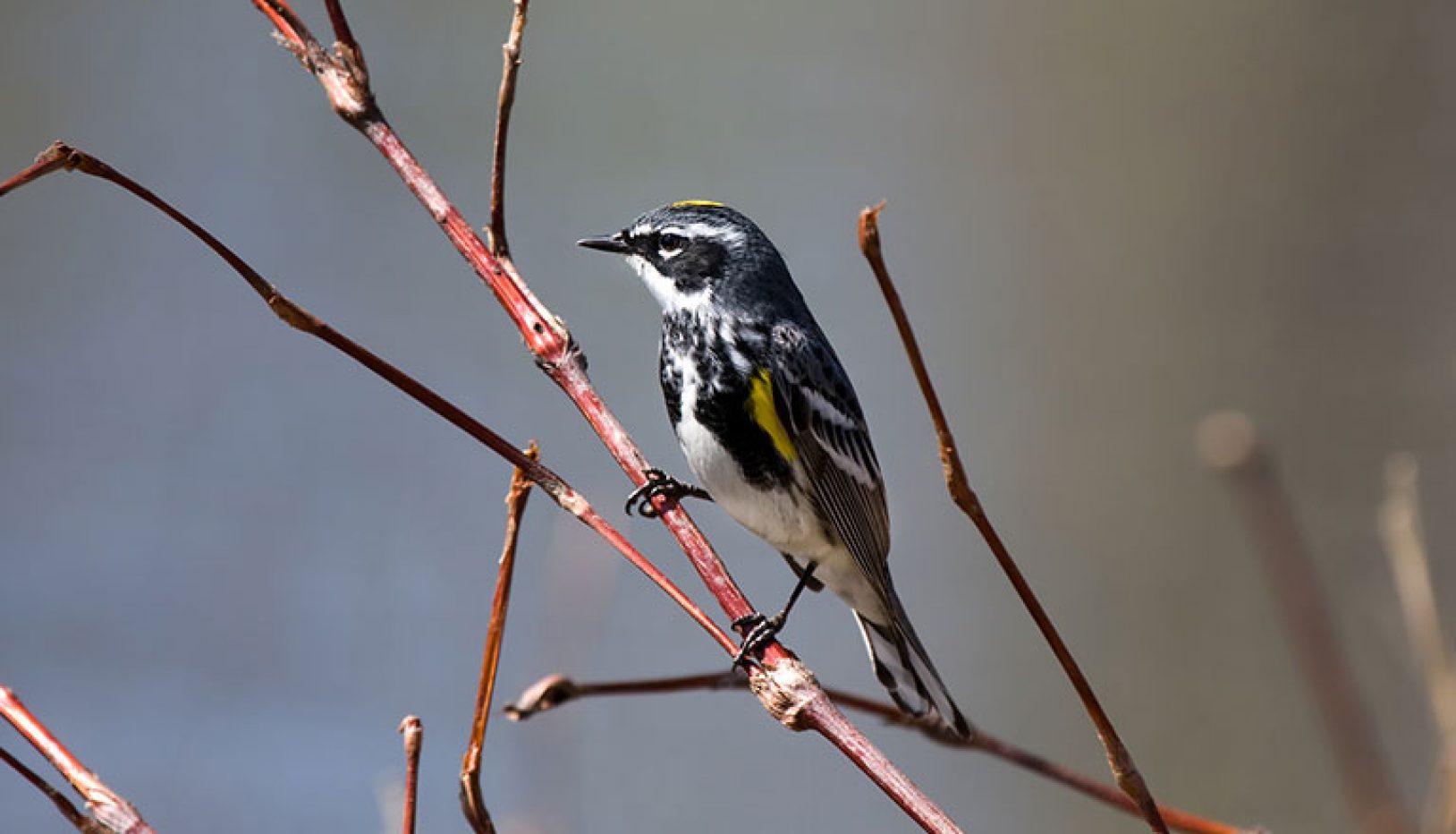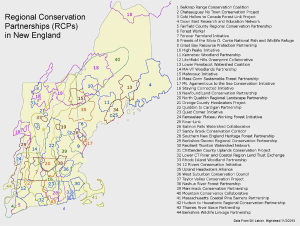Across New England and eastern New York, conservation organizations, agencies, and communities are banding together to meet the needs of landowners interested in protecting their land from development and managing their forests for cleaner water, more wood, and better bird and wildlife habitat. These collaboratives, called Regional Conservation Partnerships (RCPs), work with landowners to achieve conservation and stewardship on a landscape scale.
RCPs are informal networks of private and public organizations and agencies that develop and implement a shared conservation vision across town and, sometimes, state and international boundaries. They vary in size and scope but share a desire to increase the pace and coordination of their conservation activities. Fortyfour RCPs cover more than 25 million acres or 60 percent of New England. These networks are playing an increasingly important role in achieving large landscape conservation by helping groups work across sectors and boundaries to achieve more of their objectives.
The stakes are high. New England is one of the most forested regions of the country, and these vast forests provide clean air and water, wildlife habitat, climate change mitigation, and flood resilience. They also provide local communities with healthy outdoor recreation, local wood, fuel, jobs, and more. However, the 2010 Wildlands and Woodlands (W&W) vision documented that the resurgence of New England’s forests had peaked and that every state in the region is now experiencing net annual forest loss. W&W calls for doubling the pace of conservation to protect the area’s irreplaceable forests. Much of the forest loss occurring today is from development and fragmentation within the landscape of small private land ownerships that characterize the region.
Since the first RCP was established in 1994, birds have been a charismatic champion for collaborative large landscape conservation. The first RCP developed in New England was the Great Bay Resource Protection Partnership. The partnership initially came together to support conservation action in the 43,000-acre Great Bay Focus Area, which the Atlantic Coast Joint Venture identified as significant migratory waterfowl habitat in the North Atlantic Flyway. More than 80 percent of all waterfowl that winter in New Hampshire’s coastal areas are found in Great Bay. Partners leveraged significant federal funding with state, municipal, and private dollars to conserve 109 properties spanning 6,100 acres of critical waterfowl habitat and important recreational resources.
The RCP Network, supported by Highstead Foundation, was founded in 2012, to provide networking opportunities, research on how RCPs succeed, and targeted technical and fundraising assistance. The RCP Network collaborates with partners that may not be members of an RCP but appreciate interacting with multiple partnerships through the Network. These regional partners, like the North Atlantic Landscape Conservation Cooperative, state and federal agencies, universities, and foundations, support RCPs in advancing the pace and practice of conservation at different scales in New England and eastern New York.
In 2014, six RCPs completed a six-state landowner outreach initiative with one regional partner, the North East State Foresters Association (NEFA). Over 50 state foresters and land trust and conservation professionals worked together in three priority inter-state landscapes to learn how to encourage more landowners to conserve and manage their land. RCP members identified conservation focus areas and reached out to landowners using the Sustaining Family Forest Initiative’s Tools for Engaging Landowners Effectively. Funded by a grant from the U.S. Forest Service, the project gradually developed a focus on bird conservation.
For example, Audubon Vermont’s Foresters for the Birds program motivated a lot of conservation groups such as Franklin Land Trust and the Housatonic Valley Association to work on bird conservation and engage with foresters more directly. Both foresters and land trust staff were interested in new ways to connect with landowners, and liked the idea that timber and bird habitat management can go hand in hand. Audubon groups in Vermont and Massachusetts developed management guides for bird habitat and trained foresters to assess and enhance woodlands for birds such as Wood Thrush, Scarlet Tanager, and Blackthroated Blue Warbler. The NEFA initiative spread Foresters for the Birds and similar assessment programs to New York, Massachusetts, Connecticut, New Hampshire, and Maine. Learn more about the NEFA initiative.
After learning about the NEFA initiative at the annual RCP Network Gathering, other land trust leaders moved to advance their own landowner outreach efforts using birds and crossboundary collaboration.
For example, the Fairfield County RCP formed the Hudson to Housatonic Conservation Initiative (or H2H) in partnership with Westchester (NY) Land Trust, Mianus River Gorge, and the Housatonic Valley Association. H2H (now an RCP), also funded with support from the U.S. Forest Service, has enabled more than three dozen land trusts and other groups to coordinate where and how they engage woodland owners in 13 multi-town focus areas. These priority landscapes stretch west to east between the two rivers and from the Great Swamp in Dutchess County to Long Island Sound. The land trusts want landowners to join them in conserving woodland bird habitats that are resilient to climate change and help protect drinking water. They plan to partner with Audubon groups, train citizen scientists as bird ambassadors, and have these leaders invite landowners to plant and conserve native habitats for resident and migratory birds. By engaging landowners in forest conservation activities, coordinated through RCPs at the landscape scale, land trusts across New England and eastern New York are making huge strides in securing a hopeful future for woodland birds and their habitats. The annual 2015 RCP Gathering took place on November 18th at the Crowne Plaza Hotel in Nashua, NH – learn more.


